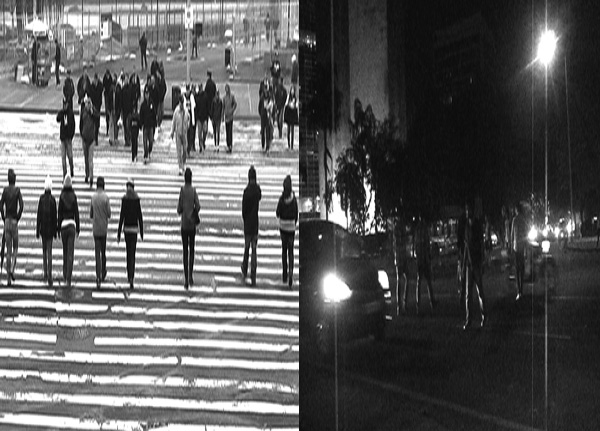
PROJECT FOR A STREET CORNER
first performed on
April 13, 2011
a street corner, Bronx, NY
performed twice in 2011
LAURA NAPIER
Bronx, NY
158283957L158283957N158283957@158283957l158283957a158283957u158283957r158283957a158283957n158283957a158283957p158283957i158283957e158283957r158283957.158283957c158283957o158283957m
lauranapier.com
PROJECT FOR A STREET CORNER
LAURA NAPIER
“project for a street corner” is a series of unannounced group performances staged in public space in different cities, adjacent to the site after which each is named, begun in 2006. To interact with crowds in these places, I bring my own crowd, enacting ordinary behavior together to contrast with the prevailing behavior in that space. “project for a street corner” asks: what devised counter-behavior can act as a key to unlock the regular behavior found in a public space? How much or how little does it take to change an accepted social structure? And, as a political metaphor, how much change is needed in our collective, conscious behavior to shift the accepted social order?
This performance moves beyond an isolated stage into the spaces of everyday life. It extends beyond the experience of a single performative body into the collective experience of a group working, experiencing, and existing together without playacting. These performances are intangible and unpredictable, due to their nature. No one wears costumes. Others present may not consciously notice the intervention.
“project for a street corner (Yankees)”: fans and locals face-off as they cross a street against each other near Yankee Stadium in the Bronx just before a game. This performance was workshopped with and performed by members of the Teen Council from the nearby Bronx Museum of the Arts. Prior to performance, the teens, many of whom were Bronx natives, expressed dissatisfaction with the mobbed feeling of the neighborhood when there was a Yankee game scheduled.
“project for a street corner (Connaught Place)”: in Connaught Place, the heart of highly administered New Delhi, India, there is no crosswalk or underpass to aid pedestrians to cross the road at this point. Those wishing to get to the other side wait in a visually striking horizontal queue until there are enough people around them, then advance horizontally, lane by lane, across the road. A group of twenty, and on a subsequent evening, a group of five, repeatedly crossed this road through traffic for twenty minutes during an early evening. In this case our behavior did not contradict or counter regular behavior of pedestrians at the site; instead, the only way in which we stood out is that we crossed again and again, never leaving the intersection. If individuals from our group were standing, waiting to cross, they inevitably attracted others who knew they could cross safely with us.